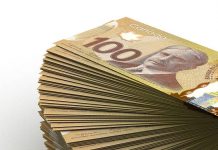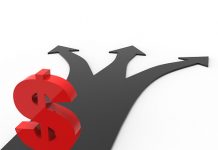Markets
The rally in US Treasuries was briefly interrupted yesterday after the US House passed a budget resolution in a first important step towards extending tax cuts, stemming stagflation fears. The US-Ukraine mineral deal and Ukrainian president Zelensky’s planned trip to Washington helped create a positive risk climate during European dealings. Even EC von der Leyen’s new Clean Industrial Deal was thrown in the mix. It hopes to cut ties (“high energy costs and fierce and often unfair global competition”) that still hold European companies back and make a clear business case for Europe. US stock markets equally took a flying start, recovering from a 3-day setback in the run-up to Q4 earnings by AI-bellwether Nvidia.
Enter US President Trump… At the first cabinet meeting of his second term, he said that a decision was made on plans for EU tariffs and that an announcement would come very soon: “It will be 25% generally speaking, and that will be on cars and all other things.” EC spokesman Gill said in response that the EU will react firmly and immediately against unjustified barriers to free and fair trade. “We’re ready to partner if you play by the rules. But we will also protect our consumers and businesses at every turn.” Trump’s comments were messy though as he suggested that levies on Canada and Mexico would take effect on April 2, suggesting a delay from the current March 4 deadline, only to be corrected by commerce secretary Lutnick who noted that neighboring countries still had to satisfy the president’s demands on fentanyl. Lutnick added that April 2 is the starting date of baseline reciprocal tariffs. All the tariff comments changes trading vibes after the European closing bell. The S&P 500 lost for example 1% intraday after the initial comments. US Treasuries swapped losses for gains with a strong $44bn 7-yr Note auction making it three in a row. US yields eventually lost 2.4 bps to 4.6 bps with the front end of the curve underperforming. EUR/USD was changing hands just below first resistance at 1.0533 ahead of the tariff comments, to slip back to 1.0470 currently. Overall damage remains contained. European equity futures are crawling back from bottoms set in after-hours trading yesterday. Nvidia earnings were strong, but didn’t trigger a strong directional move in the company’s share price afterwards and don’t set the tone for trading this morning. Today’s eco calendar contains Minutes of the previous ECB meeting and US durable goods orders, but risk sentiment will remain the key market driver. Despite this morning’s “muted” response, we’d continue to err on the side of caution at the moment.
News & Views
The EU pushes ahead with plans that were still under discussion last week to relax targets for the intermediate gas storage levels. Member States currently need to have filled storage capacity at 90% by November 1, ahead of the winter when gas demand is at its highest. The rule came after Russia’s invasion of Ukraine after which the EU cut (almost) all of the Russian gas imports. But traders say this distorts the market as countries now are forced to buy all at the same time. Gas is typically bought in the summer months because it trades cheaper due to lower demand. It then gets resold at a profit during the winter peak season. Because of the EU rule, however, and due to already unusually low storage levels (colder weather, low renewable energy production) summer prices are currently trading at its largest premium ever over the winter. Such a similar disincentive to buy gas to put into storage has required government intervention back in 2022. The EU has not explained in detail what it plans to do yet but traders say that lowering the 90% threshold to 80% would help calm down the market. Natural gas prices (Dutch TTF) extended a sharp decline yesterday. After hitting a 2-yr peak just shy of €60/MWh mid-February, prices trade around €41.
A major labor union in Japan representing several household name manufacturers such as Toyota, Panasonic and Nippon Steel, said its members are aiming for a record wage increase in the annual negotiations. They demand a 14% bump, the largest since tracking began in 2014. It’s further evidence of a virtuous spiral between rising wages and sustainable inflation that the Bank of Japan is seeking to underpin future rate hikes. Japan’s largest labor union, Rengo, based on early demands of its members, already suggested they aim for a pay increase similar to last year’s three-decade high. Rengo will release the official requested rise on March 6, followed by an initial report on the actually agreed terms a month later.












